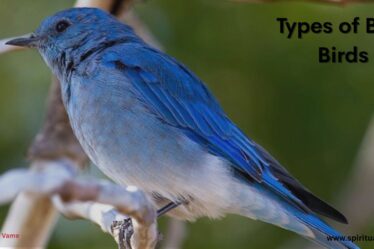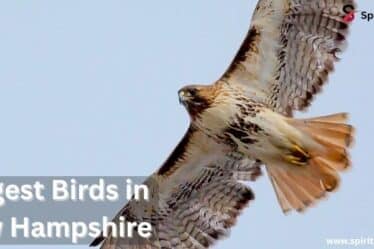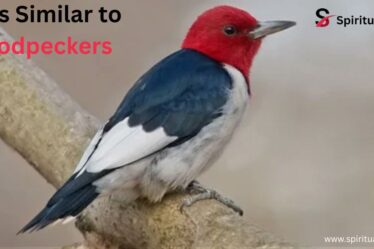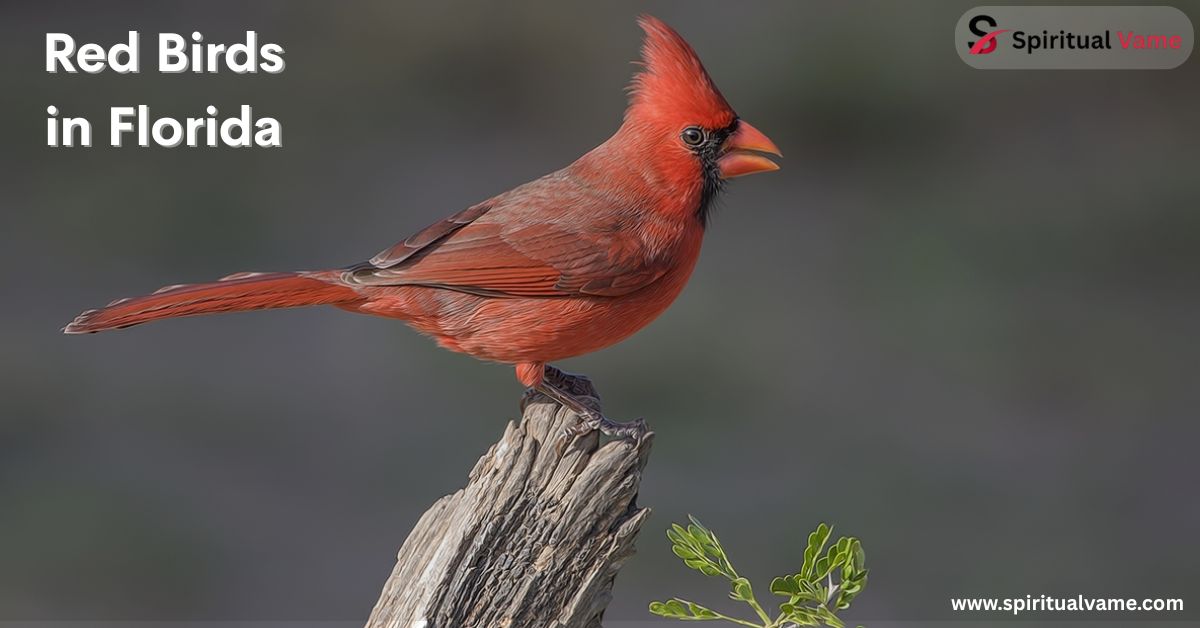
Florida is a paradise for bird lovers, especially those enchanted by the vibrant beauty of red birds. From wetlands and wooded parks to suburban backyards and forest edges, the Sunshine State offers many habitats where red-feathered species thrive. Whether you’re a casual observer or an experienced birder, these red birds in Florida are sure to catch your eye and lift your spirit. In this article, we’ll explore two detailed lists. First, a look at the Top 15 Red Birds in Florida, followed by a shorter list of 10 Beautiful Red Birds in Florida (With Pictures) for quick reference.
15 Beautiful Red Birds in Florida
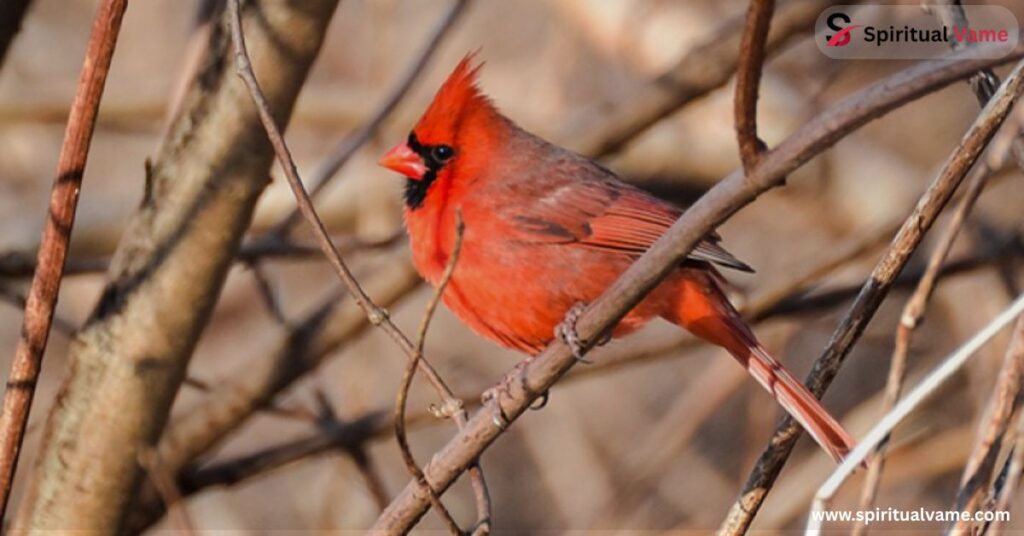
1: Northern Cardinal
The Northern Cardinal (Cardinalis cardinalis) is one of the most beloved red birds in Florida.Males display bright red plumage, a red crest, a black face, and a red beak, while females show a more reddish olive color. These birds typically measure about 21 to 23 cm in length and frequently appear in open wooded areas, parks, wetlands, and brushy fields across the Eastern United States, including Florida.
Cardinals feed on seeds, grains, fruits, and insects like grasshoppers and snails. Their behavior during the breeding season is especially charming. Males perform a display dance and show courtship behavior like beak-to-beak feeding, which helps build bonding behavior with their mates. They build nests using twigs, grasses, and plant fibers, usually laying 3 to 4 eggs. Known for their vocal sounds, these birds are often linked with a spiritual connection and are believed to bring good luck.
2: Roseate Spoonbill
The Roseate Spoonbill (Platalea ajaja) is not fully red but has pink-reddish wings and a unique spoon-shaped bill that sets it apart. This large bird measures 71 to 86 cm and lives around Florida, Texas, and other parts of the Gulf of the United States. It also ranges into South America, the Caribbean, and Mexico. These birds prefer mangrove areas, watery lakes, and shallow rivers.
Roseate Spoonbills feed in shallow water, swishing their spoon-like bill from side to side to catch small fish, frogs, newts, insects, molluscs, and crustaceans. With a white neck, greenish head, and long legs, they often move in flocks and become especially active during breeding seasons.
3: Summer Tanager
The Summer Tanager (Piranga rubra) shows a solid red body and lives in open wooded areas, especially around oaks and forest edges. Birdwatchers often spot them from April to October in the southern United States, Mexico, and parts of Central and South America. With a length of 17 cm, these birds have a red and brown plumage, dark bill, and black wings, and weigh around 29 grams.
They feed mainly on insects like beetles, grasshoppers, caterpillars, and also enjoy berries and small fruits. Summer Tanagers build their nests high in trees and are drawn to bird feeders during their stay.
4: Scarlet Tanager
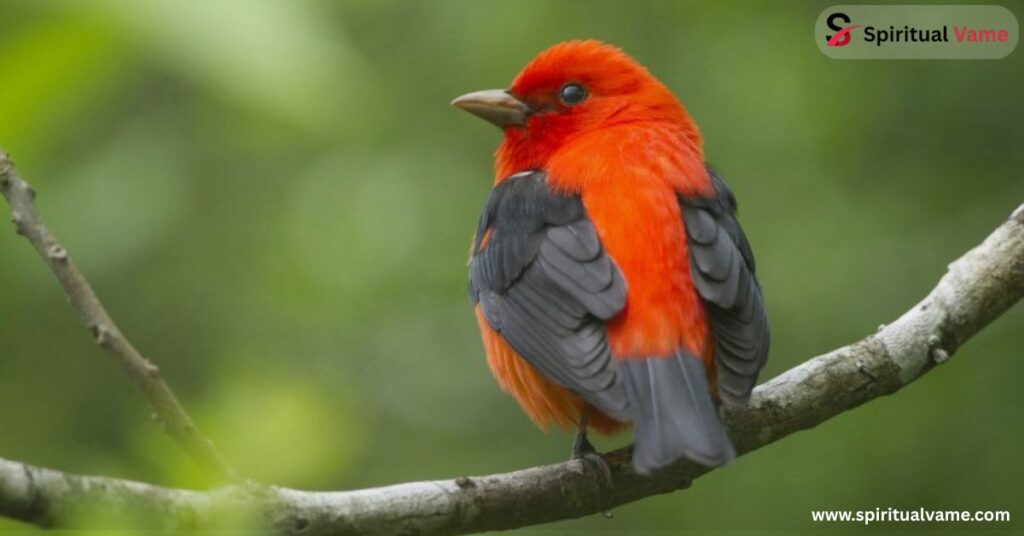
The Scarlet Tanager (Piranga olivacea) is known for its bright red body with black wings and tail, while females are olive yellow with gray brown wings. These birds are native to North America, and migrate through Central and South America. They are commonly found in deciduous forests, woodlands, suburban areas, and parks.
Scarlet Tanagers eat insects, crustaceans, beetles, caterpillars, and fruits. During breeding seasons from May to June, they lay about 4 light blue eggs, which incubate for 11 to 12 days. After hatching, the chicks fledge in around 9 to 12 days. Their calls and colors make them a favorite among birdwatchers.
5: Vermilion Flycatcher
The Vermilion Flycatcher (Pyrocephalus obscurus) is a small yet vivid red bird measuring 13 to 14 cm. This bird features a red crest, red and brown plumage, and usually inhabits open areas, shrubs, savanna lands, and woodlands in Mexico, Central America, and the United States.
These birds feed on insects, flies, grasshoppers, spiders, and beetles. They are known for territorial behavior and perching songs. Their molting period lasts around 62 to 79 days, typically between July to September.
6: Red-headed Woodpecker
The Red-headed Woodpecker (Melanerpes erythrocephalus) is eye-catching with its bright red head, white belly, black back, and black beak. It measures 19 to 25 cm and lives in East Central United States and Southern Canada. This species favors tree cavities, where it stores food and raises chicks.
These birds eat insects, seeds, nuts, fruits, and berries. They show strong territorial behavior and are known for drilling trees to find food or make nests.
7: Painted Bunting
The male Painted Bunting (Passerina ciris) is a colorful sight with a dark blue head, red chest, green and black wings, and red abdomen. Found in South Florida, New Mexico, Georgia, and Cuba, they prefer brushy areas, woodlands, dense gardens, and savanna zones.
They feed on seeds, grasses, grasshoppers, caterpillars, and even snails. Their nests are placed 3 to 6 feet above ground, often using spider webs. These birds live around 12 years and have a migratory behavior.
8: Red-bellied Woodpecker
Despite its name, the Red-bellied Woodpecker (Melanerpes carolinus) is best recognized by its red patch on the head and zebra-like black and white stripes on its wings. Found across the Eastern United States, especially Florida, they grow 22.85 to 26.7 cm in length.
They eat beetles, centipedes, spiders, fruits, and other insects. These woodpeckers make loud chur-chur-chur calls and often drum on dead or dry wood to communicate. Males and females show mutual tapping during courtship.
9: Rose-breasted Grosbeak
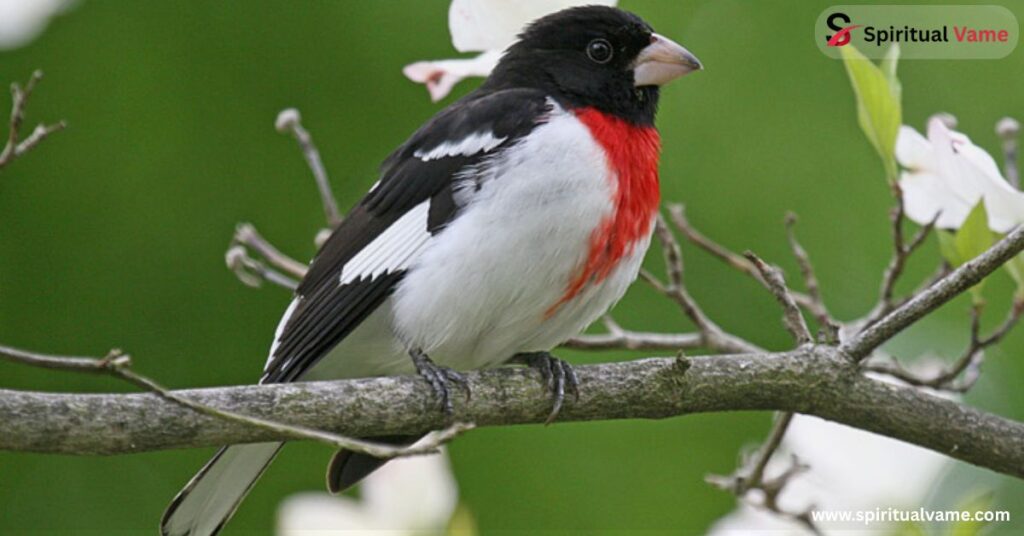
The male Rose-breasted Grosbeak (Pheucticus ludovicianus) is striking with a black head, black back, red chest, and white belly. They measure 18 to 22 cm, and live in Central America and Florida during migration.
They eat insects, berries, seeds, nectar, and even wheat. These birds breed in open wooded areas, laying 1 to 5 greenish to purple-brown eggs in nests 6 to 16.7 meters above ground. They may live up to 7.3 years in the wild and 24 years in captivity.
10: Ruby-throated Hummingbird
The Ruby-throated Hummingbird (Archilochus colubris) is a small marvel, measuring 7 to 9 cm with a shiny metallic green back, grayish-white underside, and males boasting a ruby-red throat. These birds travel between Canada, the Caribbean, and the Eastern United States, including Florida.
They feed on flowers, nectars, leaves, insects, and even spider webs. Known for their courtship rituals and territorial defense, they can hover in place due to strong flight muscles. They live for about 3 to 5 years.
11: Pileated Woodpecker
The Pileated Woodpecker (Dryocopus pileatus) is one of the largest woodpeckers in North America, reaching 40 to 49 cm in length. It has a loud call, a fiery red crest, and prefers dead or dry trees for nesting.
This woodpecker feeds on ants, insects, fruits, berries, and even snails. They create large holes in trees and begin nesting in April. Eggs hatch in 12 to 16 days, and chicks leave the nest after 25 to 30 days. They are non-migratory and very territorial.
12: Purple Finch
The Purple Finch (Haemorhous purpureus) has males that look raspberry-red, with a chunky body. They are often confused with house finches but have deeper colors and different songs. They live up to 12 years and are common at bird feeders in Florida during winter.
13: Scarlet Ibis
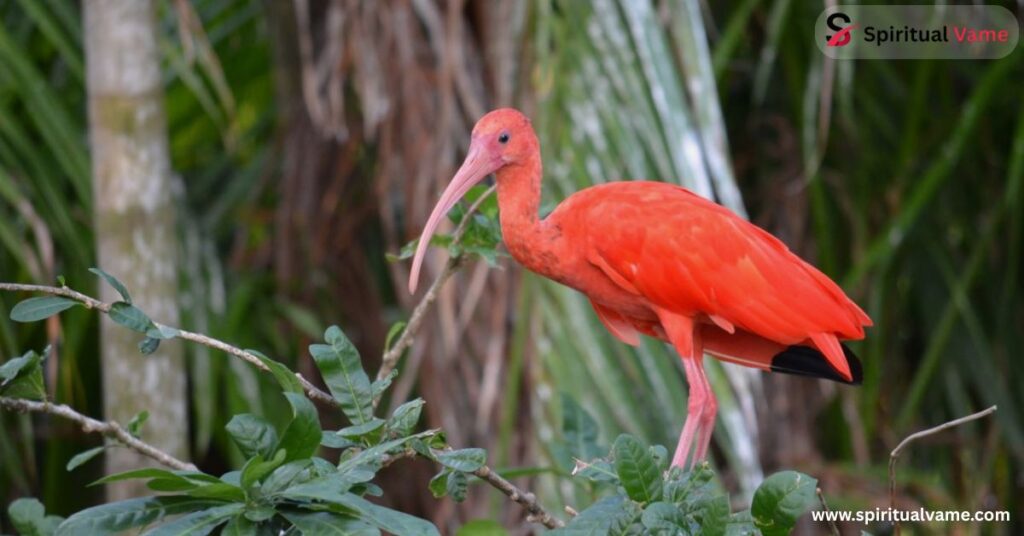
Although not common, the Scarlet Ibis occasionally appears in Florida. It is entirely bright red and native to South America and the Caribbean. This wading bird uses its long curved bill to find food in shallow waters like mangroves and coastal lakes.
14: Common Redpoll
The Common Redpoll is a tiny, rosy-tinted bird that visits Florida in winter. They feed on seeds and move in flocks. Though not always easy to spot, their presence is a winter treat for birdwatchers.
15: House Finch
The House Finch (Haemorhous mexicanus) is a frequent visitor to backyards across Florida. The males have a red face and chest, and they are known for their sweet, loud songs. These birds are highly adaptable and often seen around homes, cities, and rural areas.
Conclusion
Red birds in Florida are more than a colorful sight—they’re part of the natural beauty and biodiversity of the state. Whether it’s the glowing Northern Cardinal, the tropical Roseate Spoonbill, or the dazzling Scarlet Tanager, each species brings something special to Florida’s skies, trees, and waters. By learning about them, we appreciate not just their looks, but their behavior, habitats, and role in our environment.

